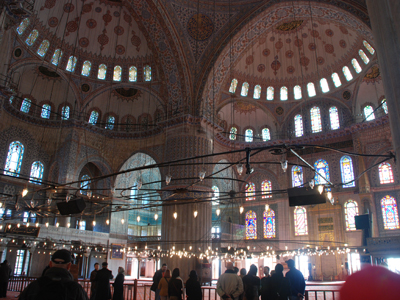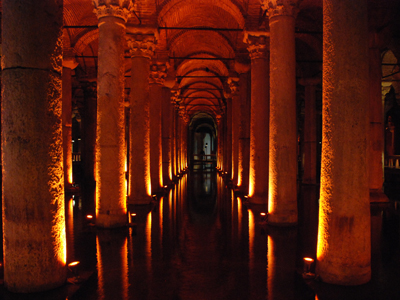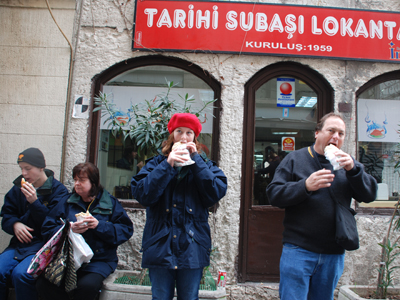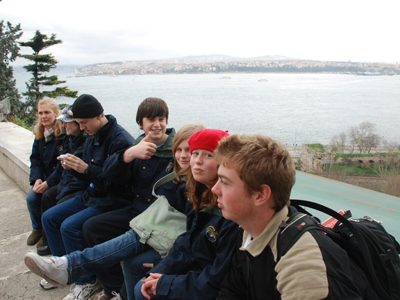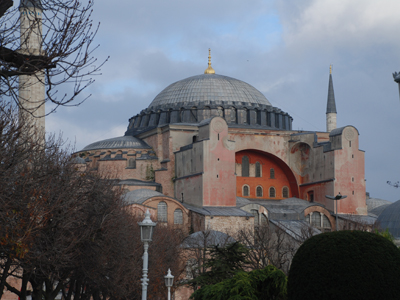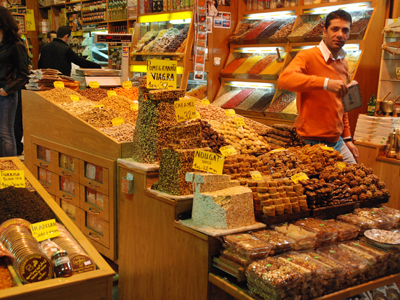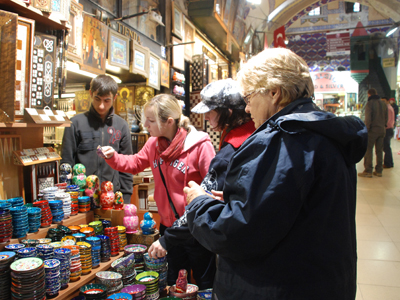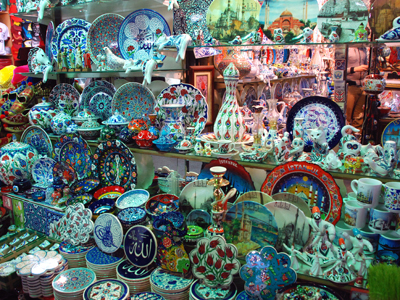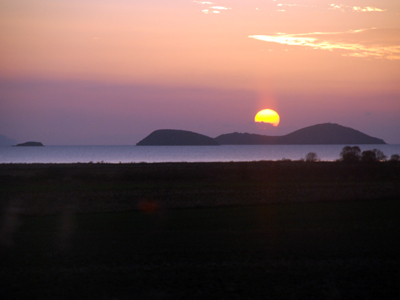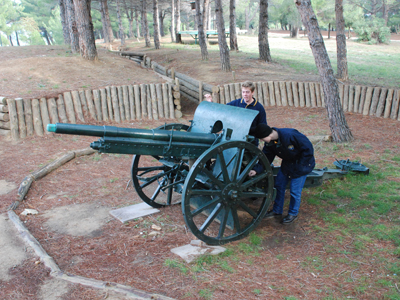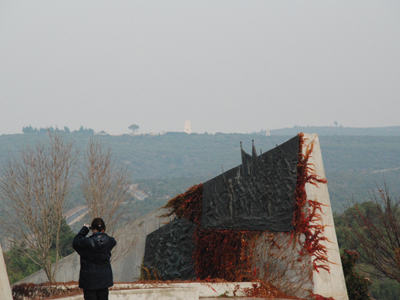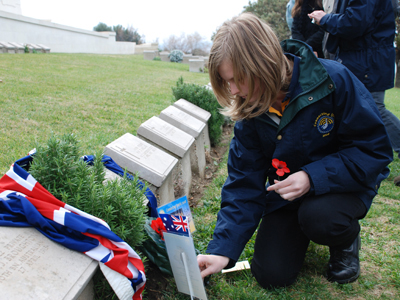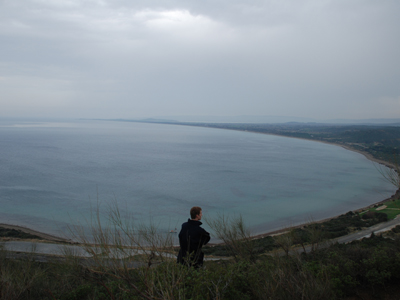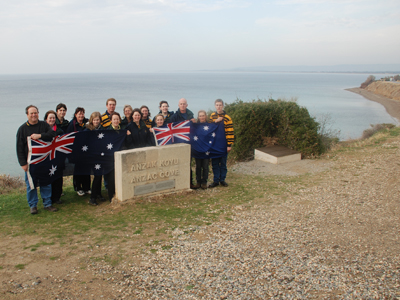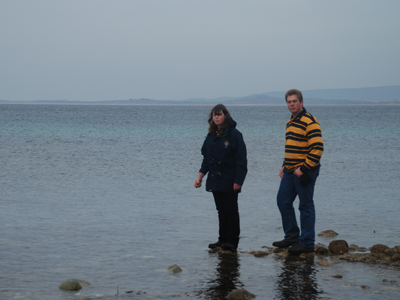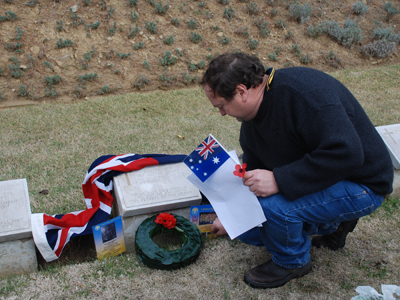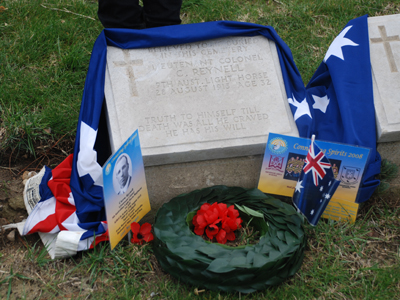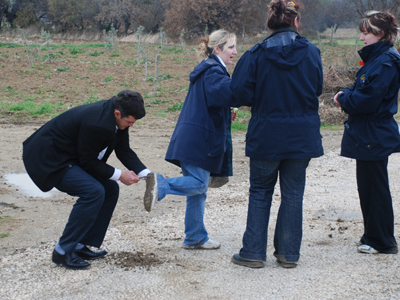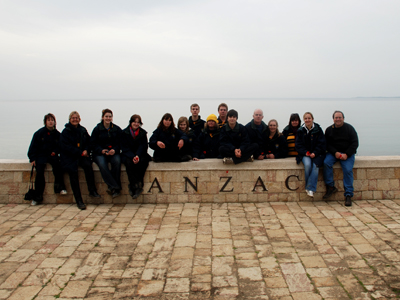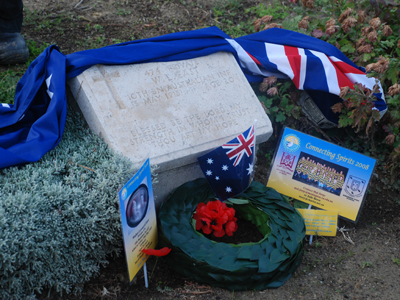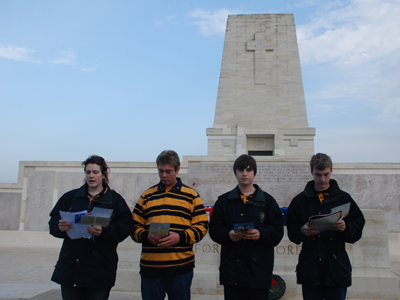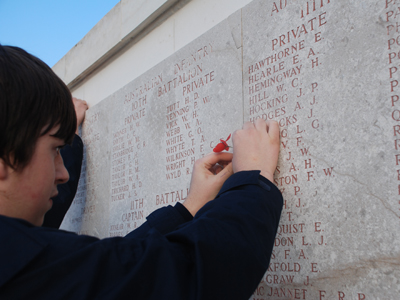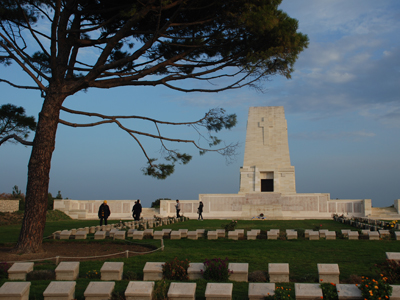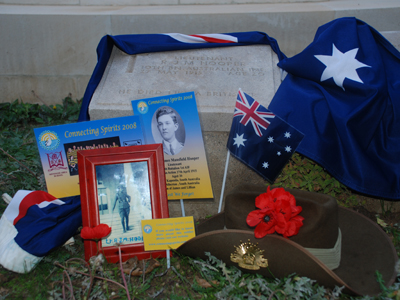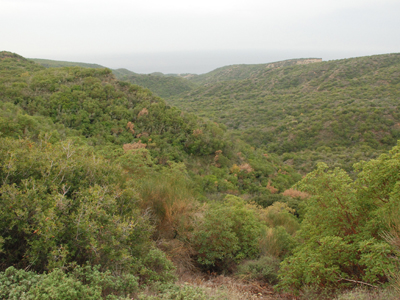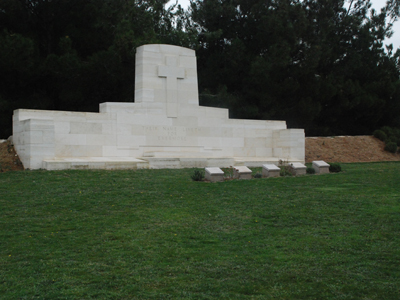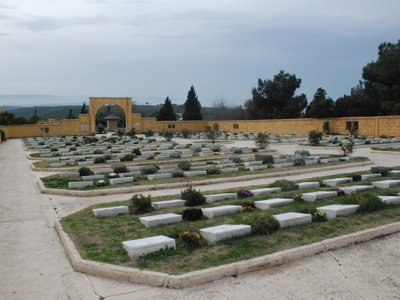Gallipoli
After the completion of the official "Connecting Spirits" tour, a number of the members of the party continued on to Turkey to spend a few days on the Gallipoli Peninsula. Due to DECS Policy students on school tours are not permitted to travel to countries with a DFAT Travel Warning of 3 or more, which includes Turkey, so only those members of the tour who were not students or who were travelling with their parents were able to complete this leg of the journey. Although not officially part of the Connecting Spirits project, the spirit was maintained with a number of soldiers being commemorated by group members and soldier cards being left at gravesides just as they were on the Western Front.
|
|
Sunday 14th December to Friday 19th December
After leaving our hotel in Paris and saying farewell to the majority of the group as they made their way home, 15 members of the original group boarded a Turkish Airways flight to Istanbul. We were to spend the next 5 days in Turkey with a tour to the Gallipoli Peninsula the focus of our time there.
After landing and getting through the usual procedures we met our guide Yaksel, who immediately went to get the bus driver. If we thought that the traffic was bad in Paris, it had nothing on the traffic at Ataturk Airport on that day. There had been a four day religious holiday the previous week which had started on the Monday. The government had decided that it would give everybody the Friday off as well which effectively meant a 9 day break including the weekends. Which meant that every man and his dog was coming back from holidays on the same day that we arrived in Istanbul. We finally made it to our hotel and then found out that due to the holidays there were very few food outlets open to get a meal. After a short walk we found a roadside Yiros stall that took great pains to serve a group of 15 who turned up out of nowhere. And the yiros were great!!!!!
The next morning we had an easy start and made our way to the Blue Mosque. This building was built in the 16th century and is beautiful inside. The colours of the tiles and the lighting create an aura of spirituality and peace. From here we ventured underground to explore the Basilica Cistern which is an ancient water storage under the Sultan Ahmet Square. It was carved out of the rock about 1500 years ago and the ceiling is supported by columns recycled from temples etc around the city. With the lighting affects and the fish swimming in the cool water below the board walk, this is a tranquil and beautiful place. After this we walked to the Topkapi Palace, which was the administrative centre of the Ottoman Empire and the displays included some of the riches of the Sultans, including massive jewels and rich clothing. It even contained holy relics of the Islamic religion such as the sword, hair and footprint of Mohammed. Lunch was traditional Turkish fare at a restaurant that had about 4 waiters for every table. After this we made our way to the Spice Bazaar, which has been the site of trade in all kinds of exotic materials for centuries. It is located right next to the "New" Mosque which is only 400 years old. With 400 stalls it was a gentle introduction to our trip to the Grand Bazaar the following day. Taking in the sights and smells of Turkish Delights of all kinds, herbs and spices (including Turkish Viagra; works 6 times in one night!!!) and stores full of Beluga Caviar, some of us tried our hand at haggling, buying T-shirts, enamel and jewellery at bargain prices.
The next morning we made our way to the Grand Bazaar, a massive complex of stalls that has evolved over centuries and contains 1000 stalls selling everything from small trinkets and souvenirs to elaborate handmade rugs worth thousands of dollars. A few hours here saw us part with more money than we all intended and we spent the next few hours comparing our purchases as our bus headed toward Cannakale and the Gallipoli Peninsula.
It was a 5 hour trip from Istanbul to Cannakale which was to be our base while we were exploring this important area in Australia’s history. The countryside varied from heavily populated seaside holiday villages to sparse farm land. The sun was setting as we started to make our way down the peninsula, across the area where the Turks expected the invasion by the Allied forces to occur.
After travelling across the Dardanelles to Cannakale and our hotel, we had tea and headed to bed to be ready for the next day.
After breakfast the next morning, we headed back across the Dardanelles to Eceabat, where the Gabe Tepe Museum display was being held temporarily while the museum was renovated. We were lucky as the next day the exhibition would close so that it could be moved back to its original building. There were some amazing exhibits including bullets that hit each other in mid air and became welded to each other, an indication of the intensity of fire. There was also a human skull with a projectile still embedded into its forehead. From there we drove to Gaba Tepe which was the original intended site for the ANZAC Landing. There were still some displays of guns etc outside the building. 
We then headed toward the actual landing site at Anzac Cove, where our first commemoration for this part of the trip occurred at Beach Cemetery. After spending some time here looking at the headstones including that of John Simpson we headed across the road to Shrapnel Gully Cemetery. Donna said that we had to go to Plugge’s Plateau. Not knowing any better we headed up a rough track. Little did we realise what we were in for. The rain began to fall as we climbed higher. Of course we reminded ourselves that we had it easy with no heavy pack of gear and weapons to carry and no Turkish rifles firing at us. That just made us appreciate more what those men had to face. The view from the top was amazing and worth every laboured step we took.
knowing any better we headed up a rough track. Little did we realise what we were in for. The rain began to fall as we climbed higher. Of course we reminded ourselves that we had it easy with no heavy pack of gear and weapons to carry and no Turkish rifles firing at us. That just made us appreciate more what those men had to face. The view from the top was amazing and worth every laboured step we took.
We returned to the bus and from here went to Ari Burnu at the northern end of Anzac Cove. Here we walked along the beach and the emotions certainly began to flow as we placed our hands in the water that those brave young men had waded through on that grey morning 93 years ago. We then drove to the site of the next commemoration, Embarkation Pier Cemetery. After our remembrance of Ira Smart, we sat down to have our lunch on the lawn in the middle of the cemetery. I must admit to feeling a bit weird about this at first but I soon came to see it as having lunch with the “boys”.  Unlike the Western Front there are no headstones for the unknown soldiers. So even though there are hundreds of remains buried in each of these cemeteries there are relatively few grave markers. For example in the Embarkation Pier Cemetery there are 944 men buried but only 282 markers. The impression is of a large expanse of lawn between a few graves. The reality is that there are the remains of soldiers under every step you take. After lunch we continued north to Hill 60. To get to this cemetery required a considerable walk along a muddy track with washouts along the way. These proved to very productive in terms of shell fragments, shrapnel balls and bullets. We finally made it to the cemetery and Stephanie commemorated Carew Reynell. We walked back to the bus and when we got there it was obvious the bus driver wasn’t keen on mud in his bus as he grabbed a stick and began to clean out our boots, or at least Donna’s boots. Perhaps there was another motive!!!! We then
Unlike the Western Front there are no headstones for the unknown soldiers. So even though there are hundreds of remains buried in each of these cemeteries there are relatively few grave markers. For example in the Embarkation Pier Cemetery there are 944 men buried but only 282 markers. The impression is of a large expanse of lawn between a few graves. The reality is that there are the remains of soldiers under every step you take. After lunch we continued north to Hill 60. To get to this cemetery required a considerable walk along a muddy track with washouts along the way. These proved to very productive in terms of shell fragments, shrapnel balls and bullets. We finally made it to the cemetery and Stephanie commemorated Carew Reynell. We walked back to the bus and when we got there it was obvious the bus driver wasn’t keen on mud in his bus as he grabbed a stick and began to clean out our boots, or at least Donna’s boots. Perhaps there was another motive!!!! We then  turned back south to the Anzac Commemorative Area where the Dawn Service is held every Anzac Day. It is amazingly small considering the numbers that attend. Once again we made our way to the waterline and this time each of us placed a poppy in the water. The next stop was the Lone Pine Cemetery and Memorial where we commemorated 5 more
turned back south to the Anzac Commemorative Area where the Dawn Service is held every Anzac Day. It is amazingly small considering the numbers that attend. Once again we made our way to the waterline and this time each of us placed a poppy in the water. The next stop was the Lone Pine Cemetery and Memorial where we commemorated 5 more soldiers. Our last activity for the day was a steep walk to the 4th Battalion Parade Ground Cemetery to remember the last soldier for the trip. This was a moment to savour as finally we had come to the 100th soldier. This was a huge undertaking and there had been times in the preparation when we wondered if we had taken on too many.
soldiers. Our last activity for the day was a steep walk to the 4th Battalion Parade Ground Cemetery to remember the last soldier for the trip. This was a moment to savour as finally we had come to the 100th soldier. This was a huge undertaking and there had been times in the preparation when we wondered if we had taken on too many.
I can remember thinking as we headed back toward Cannakale that I was glad to have come to Gallipoli but I couldn’t see myself coming back. It didn’t have the same feel as the Western Front for me and speaking to others on the trip I was not alone. Perhaps it was that we were burnt out or perhaps we were still getting used to being in a smaller group.
The next morning we made our way back to Lone Pine and then moved further up the road to Courtney’s and Quinn’s Posts. While we were there Daryl visited the toilet behind some road side stalls only to find himself locked in. With some feverish work on the hinges he was finally released by Yaksel and the driver as they removed the door. We then moved across the road to the Turkish Cemetery. It was certainly worth seeing this conflict from the other point of view. The names on the stones revealed that these were young men just like those Australians that they were fighting; only in their case they were defending their homeland from invaders.
We then made our way around to the Nek. This is the site of that amazing episode that was the central action of Peter Weir’s movie “Gallipoli” when 600 men in waves of 150 went over the top to almost certain death, even though they knew that it was futile. Walking around this area reignited the same feelings that I had encountered on the Western Front, and I could see myself coming back. This was made stronger as I knew I was close to where another of my great uncles (Uncle Maurie) had been shot early in May 1915. He took a long time to recover and to return to Australia only to re-enlist and be gassed in Belgium in October 1917. I had some idea of where this occurred but the terrain is rough and the vegetation so similar it was hard to tell one ridge from another. I was determined now to come back with time to wonder around and really get the feel of the place. We then went to Walkers Ridge where you get an amazing view over most of the Anzac battlefields.From here we moved to Baby 700 and then to Chunuk Bair, where memorials to Ataturk and to the New Zealanders, who held this vital land for a short while, dominated the area.
 This completed our tour of the Anzac area and we now headed south to Cape Helles, where the main British and French landings occurred. The first stop here was the Turkish Cemetery and Martyr’s Memorial. The memorial is a massive rectangular structure that can be seen for miles from sea. The cemetery is really only symbolic as there are no remains interred there. There are just row upon row of glass headstones with the names of about 15 Turkish soldiers on each. The numbers are staggering, even after experiencing the walls of Thiepval
This completed our tour of the Anzac area and we now headed south to Cape Helles, where the main British and French landings occurred. The first stop here was the Turkish Cemetery and Martyr’s Memorial. The memorial is a massive rectangular structure that can be seen for miles from sea. The cemetery is really only symbolic as there are no remains interred there. There are just row upon row of glass headstones with the names of about 15 Turkish soldiers on each. The numbers are staggering, even after experiencing the walls of Thiepval and VB, this was hard to take in immediately. When I said there are no remains there, apparently one British soldier took home a souvenir, in the form of three Turkish skulls. When he died and his descendents found the skulls in the attic they returned them to the Turkish Government who had them buried amongst the headstones.
and VB, this was hard to take in immediately. When I said there are no remains there, apparently one British soldier took home a souvenir, in the form of three Turkish skulls. When he died and his descendents found the skulls in the attic they returned them to the Turkish Government who had them buried amongst the headstones.
From here we drove to the Cape Helles Memorial to British soldiers. In this context British refers to those from the then British Empire, so includes Indian troops. This memorial remembers those British and Indian soldiers killed anywhere in the Gallipoli Campaign and Australian troops killed at Helles, particularly in the 2nd Battle of Krithia in May 1915, who have no known grave. The number of men remembered is 20,883.
 The next stop was the landing site of the “River Clyde”. This ship was an old collier that on the 25th April was run aground and large doors on its side thrown open so that troops could run over a bridge of barges onto the shore. Things didn’t quite go to plan and the Turks had machine guns that could rain bullets upon the soldiers as they left the ship. Only 3 men made it to the beach uninjured so most of the soldiers were trapped on board until they could get off under the cover of darkness. We overlooked this area and looked down upon the Canterbury Cemetery. The scene is beautiful and belies the terrible loss of life that occurred here. From here you can look across the Dardanelles and your main view is the Plains of Troy. Men have been doing to this stuff to each other for thousands of years; you would think we would learn by now.
The next stop was the landing site of the “River Clyde”. This ship was an old collier that on the 25th April was run aground and large doors on its side thrown open so that troops could run over a bridge of barges onto the shore. Things didn’t quite go to plan and the Turks had machine guns that could rain bullets upon the soldiers as they left the ship. Only 3 men made it to the beach uninjured so most of the soldiers were trapped on board until they could get off under the cover of darkness. We overlooked this area and looked down upon the Canterbury Cemetery. The scene is beautiful and belies the terrible loss of life that occurred here. From here you can look across the Dardanelles and your main view is the Plains of Troy. Men have been doing to this stuff to each other for thousands of years; you would think we would learn by now.
From here we headed back to Cannakale to get a few hours sleep before getting up at 4.00am to make sure that we could catch the ferry back over the Dardanelles at 5.00 so that we could get to the airport on time. All was going well, everybody was up and packed and we made our way down the street to the bus. The bus driver was working furiously on something, trying to depressurise the pneumatics by all appearances. We couldn’t tell what was happening but we knew that Yaksel was not happy and even though we couldn’t understand the words we knew he was swearing. Then he told us the bus driver had locked the keys in the bus. He was trying to depressurise it so he could open the baggage bays to get in the secret door. We started to stress, the next ferry was leaving soon and the next one after that was at 7.00 am so those going back to Australia would definitely miss their flight. Finally the doors came open and the driver got into the bus and with a huge smile on his face opened the main door for us. We flew onto the bus and got to ferry with a few minutes to spare. The rest of the trip was uneventful, apart from having to convince the security at the entrance to the airport that the 8 kg shell fragment in Bethany’s suitcase was from Belgium and not an antique from Gallipoli. Those of us heading to Amsterdam said farewell to those going home as they rushed to get their flight, and then settled down to wait for ours. Connecting Spirits was definitely over for 2008.

